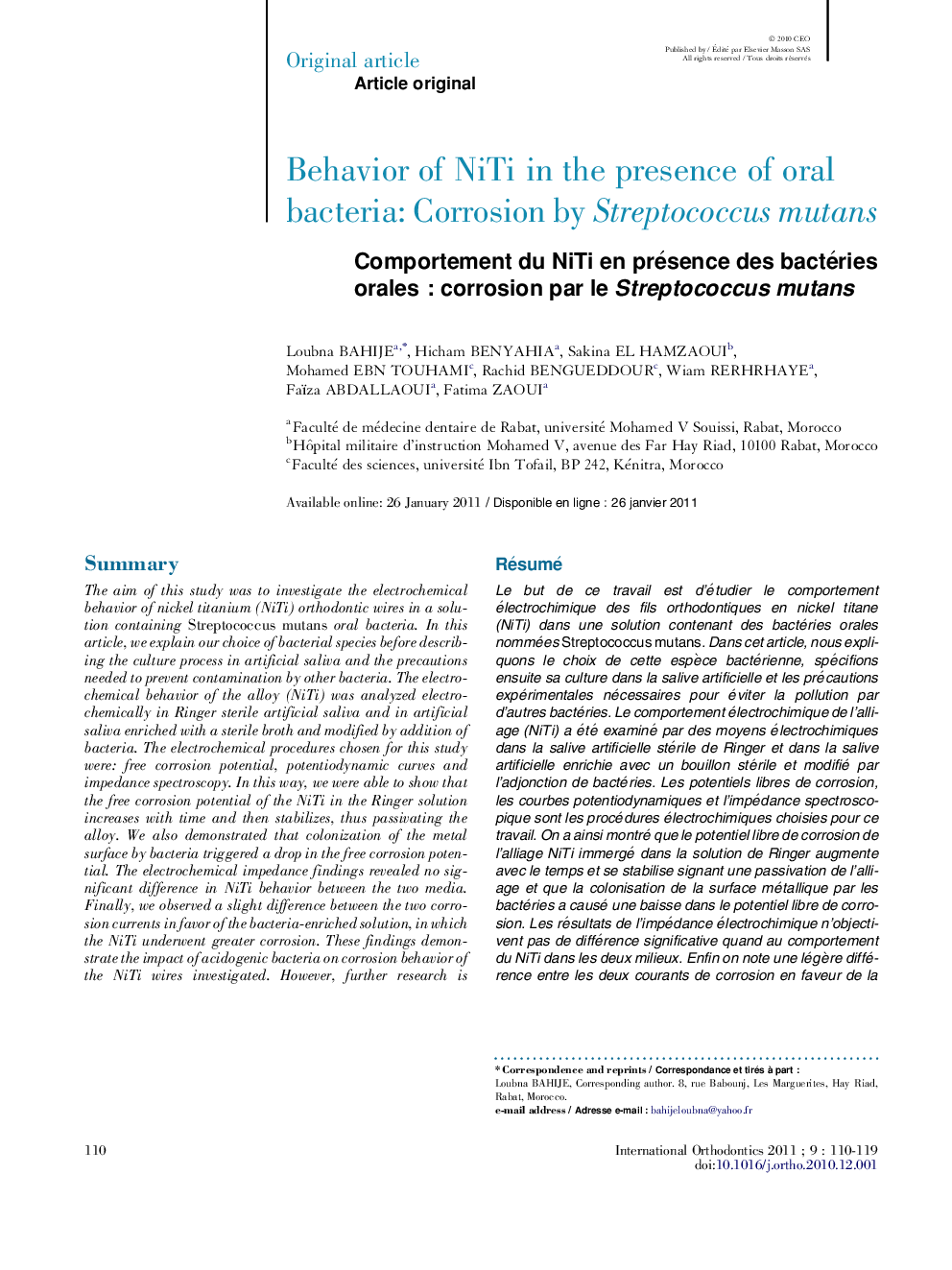| Article ID | Journal | Published Year | Pages | File Type |
|---|---|---|---|---|
| 3135798 | International Orthodontics | 2011 | 10 Pages |
Abstract
The aim of this study was to investigate the electrochemical behavior of nickel titanium (NiTi) orthodontic wires in a solution containing Streptococcus mutans oral bacteria. In this article, we explain our choice of bacterial species before describing the culture process in artificial saliva and the precautions needed to prevent contamination by other bacteria. The electrochemical behavior of the alloy (NiTi) was analyzed electrochemically in Ringer sterile artificial saliva and in artificial saliva enriched with a sterile broth and modified by addition of bacteria. The electrochemical procedures chosen for this study were: free corrosion potential, potentiodynamic curves and impedance spectroscopy. In this way, we were able to show that the free corrosion potential of the NiTi in the Ringer solution increases with time and then stabilizes, thus passivating the alloy. We also demonstrated that colonization of the metal surface by bacteria triggered a drop in the free corrosion potential. The electrochemical impedance findings revealed no significant difference in NiTi behavior between the two media. Finally, we observed a slight difference between the two corrosion currents in favor of the bacteria-enriched solution, in which the NiTi underwent greater corrosion. These findings demonstrate the impact of acidogenic bacteria on corrosion behavior of the NiTi wires investigated. However, further research is required, notably incorporating longer immersion times in the two media.
Related Topics
Health Sciences
Medicine and Dentistry
Dentistry, Oral Surgery and Medicine
Authors
Loubna Bahije, Hicham Benyahia, Sakina El Hamzaoui, Mohamed Ebn Touhami, Rachid Bengueddour, Wiam Rerhrhaye, Faïza Abdallaoui, Fatima Zaoui,
